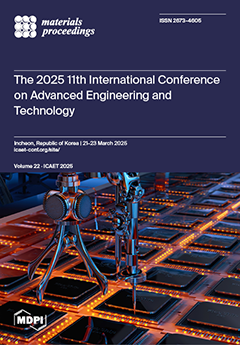Mater. Proc., 2025, ICAET 2025
The 2025 11th International Conference on Advanced Engineering and Technology
Incheon, Republic of Korea | 21–23 March 2025
Volume Editors:
Jongwan Hu, Incheon National University, Republic of Korea
Dongkeon Kim, Dong-A University, Republic of Korea
Mosbeh Kaloop, Incheon Disaster Prevention Research Center, Republic of Korea; Mansoura University, Egypt
- Issues are regarded as officially published after their release is announced to the table of contents alert mailing list.
- You may sign up for e-mail alerts to receive table of contents of newly released issues.
- PDF is the official format for papers published in both, html and pdf forms. To view the papers in pdf format, click on the "PDF Full-text" link, and use the free Adobe Reader to open them.



